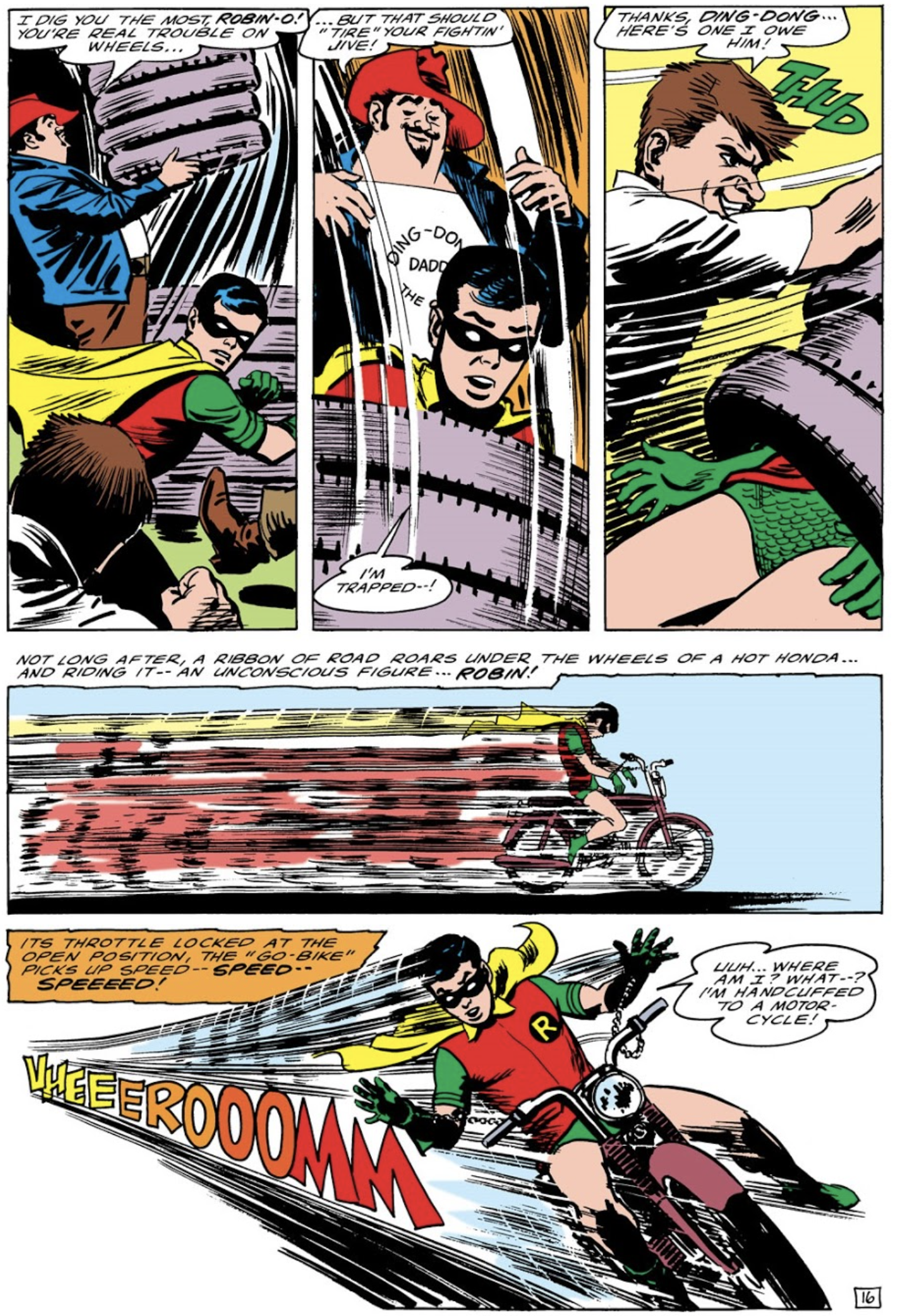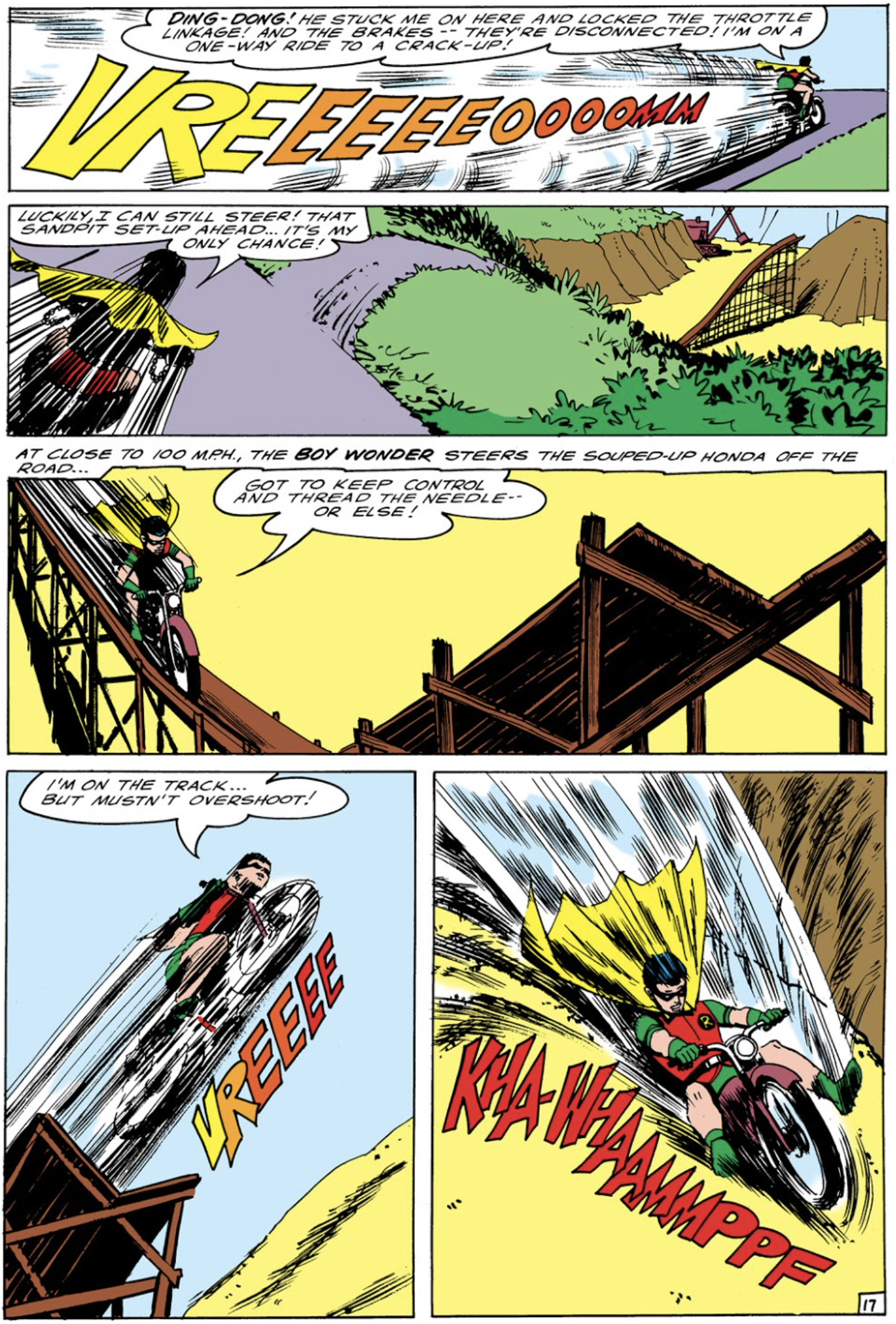Bob Haney and Nick Cardy: Past Masters (Part Two)
As I asserted yesterday, Bob Haney’s stock in trade was action set pieces. He was comics’ answer to Michael Bay. There were much better writers, but I don’t know anyone who could write as visceral a fight sequence as Haney.
Although he wrote his share of Superman stories, his best work involved heroes who were vulnerable, and in particular, vulnerable to gravity. This made him an ideal Batman scripter, and Haney wrote some of the best Bat stories of the late sixties, during his collaboration with Neal Adams on Murray Boltinoff’s teamup book The Brave and the Bold.
But Haney’s best collaborator, when it came to vertiginous action sequences, was the great Nick Cardy.
Granted, these are covers, and may have been conceived independently of Haney, as DC covers tended to be. So let’s look at an action sequence in an early Teen Titans story, beginning with a clever means of capturing our hero, and a heart stopping, if ridiculous, means of dispatching him.
It’s just close enough to being possible to make it genuinely scary.
But the mother of all Haney/Cardy set pieces is found in a 1966 Aquaman story, a spy rip-off called “O.G.R.E. Strikes Back!” For sheer preposterousness, you can’t beat this one. And nothing could be more preposterous than Aquaman’s strange trip over Manhattan Island.
A little explanation might be helpful. O.G.R.E., one of the thousands of abbreviated criminal organizations which threatened world peace in the 1960s, cooks up a plan to hold the United Nations building, and all of the diplomats inside, hostage. The plan involves tricking Aquaman into letting loose a cascade of water under tremendous pressure, forming a wall around the building that nothing can penetrate. After being suckered in, Aquaman finds that both O.G.R.E. and the cops are after him. So he takes refuge behind a pair of sunglasses and hops on a tour boat, wondering what to do next. As it happens, the matter falls out of his hands: a child falls overboard, and our hero has to save him.
That’s all you need to know. What follows is one long action sequence, seven pages worth. I wonder if something like this could ever be convincingly put on film? But that’s one of the nice things about comics: the best writers and illustrators can make almost anything look plausible, even this:
Yesterday we looked at Haney’s use of the three-act structure commonly employed in feature films. Here we find another tool of screenwriters, the complication. Aquaman wants only to conceal himself in a crowd long enough to figure out what his next move must be. But the kid falling overboard makes this impossible:
If you’re part of a top-secret criminal organization, it’s always helpful to wear T-shirts which advertise it.
We took note yesterday of Cardy’s casting choices. Here we see him casting Slavs as assassins, two guys straight out of another spy story, From Russia With Love. Works fine, as far as I’m concerned. Much more interesting than Aquaman’s Hollywood bone structure.
Good writers keep raising the stakes on you. Earlier our hero had been tricked into doing O.G.R.E.’s bidding, and was being sought by the authorities as a traitor. But now he’s in the crosshairs of both the FBI and O.G.R.E. And his one way out is more dangerous still:
I’m sorry, but this thing is terrific, absolutely terrific. Catapulting over Manhattan. Our hero can’t fly and isn’t invulnerable. He’s just able to breathe underwater, and is quite strong. (And a weensy bit gullible.) Presumably he could hit the water with a nice dive and emerge unscathed. But oops, here’s another complication, some twenty years before Remo Williams used the same landmark for a fight scene.
Pretty good place for a chapter break. Chapter breaks have seldom been used in comics since the 1960s, but they can sure offer the customer a moment to catch his breath before what happens next. I guess the water jetting from the boat is for fire-fighting or something along those lines.
Struck by a bullet, another complication.
So much for our action sequence, seven pages of steadily ramping up the danger.
Today, by the way, they would never allow the same sfx to indicate Aquaman’s hitting the water, and the sound of the hand grenades. It’s too easy these days to send the page back to the letterer for changes. But in 1966, such changes were done only reluctantly. Then as now, letterers weren’t working in the office. Changing that WHOMP to a BOOM would have been a far more complicated process.
Anyway, that’s the action sequence, one of the best I’ve ever seen. It begins on a boat, then into the harbor, moves to a plume of cascading water, takes us over Manhattan, onto the Statue of Liberty, and then back in the harbor.
This ain’t War and Peace, just seven pages of adrenaline. I can’t think of a better one in my history of reading, and working on, comic books. But I have a hunch that if there is indeed a better sequence, it too probably came from the hands of Bob Haney and Nick Cardy.










